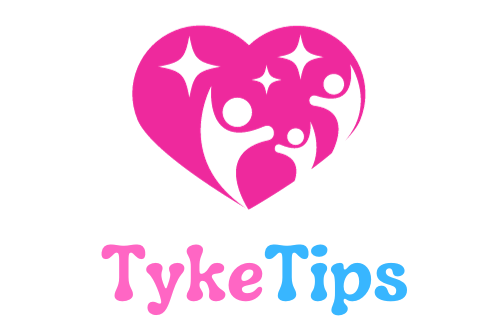In “Helping Toddlers Regain Composure: Strategies from Dad University,” you’ll discover a video titled “How to Calm a Toddler During a Tantrum” by Dad University that offers effective techniques to help calm down your little one during those challenging moments. Whether you’re a first-time parent or have dealt with tantrums before, this video provides valuable insights on recognizing the signs of an impending tantrum and responding appropriately. It emphasizes the importance of staying in charge and not letting tantrums control your life, while providing nine strategies for calming a toddler during a tantrum. These strategies include calming yourself first, using a calm voice, getting down to the child’s eye level, validating their feelings, offering comfort, providing a comfort item, distracting them, giving them space, and seeking additional resources for dealing with tantrums.
Hey guys! If you’re tired of struggling with your toddler’s temper tantrums and feeling helpless when they’re crying and screaming uncontrollably, then “How to Calm a Toddler During a Tantrum” is the video for you. In this informative video, Dad University founder Jason Kreidman shares nine strategies that you can use to effectively calm your toddler during a tantrum. From understanding why tantrums occur to expressing empathy towards your child’s emotions, these techniques will help you navigate through the challenging phase of tantrums and regain your sanity. Join Dad University for this video and gain valuable insights that will equip you with the tools to help your child regain composure and experience happiness even during the most difficult tantrums.
Recognizing the Signs of an Impending Tantrum
Behavioral cues
Recognizing the behavioral cues that precede a tantrum can help parents intervene before it escalates. Some common behavioral cues to look out for include:
- Whining or crying: This is often the first sign that a tantrum is brewing. It is the child’s way of expressing frustration or displeasure.
- Clenching fists or tensing their body: This can indicate that the child is becoming agitated and may be on the verge of a tantrum.
- Refusing to follow instructions: When a child starts to resist or ignore simple instructions, it may be a sign that they are feeling overwhelmed and unable to cope.
- Becoming easily frustrated or irritable: A child who is on the verge of a tantrum may react strongly to minor frustrations or setbacks.
- Engaging in attention-seeking behaviors: Some children may act out or exhibit attention-seeking behaviors as a way of expressing their emotional distress.
By being attentive to these behavioral cues, parents can intervene early and prevent a full-blown tantrum from occurring.
Physical cues
In addition to behavioral cues, there are also physical cues that can indicate that a child is on the brink of a tantrum. These physical cues include:
- Flushed face: When a child’s face becomes flushed, it is a sign that they are experiencing strong emotions and may be unable to regulate their feelings.
- Rapid breathing: Increased breathing rate is often a physical response to heightened emotions. It can be a precursor to a tantrum.
- Clenched teeth or fists: Physical tension in the body, such as clenched teeth or fists, can indicate that a child is becoming increasingly agitated.
- Increased fidgeting or restlessness: When a child starts to fidget or move around excessively, it may indicate that they are struggling to manage their emotions.
By paying attention to these physical cues, parents can recognize when their child is becoming overwhelmed and take steps to help them calm down before a tantrum occurs.
Responding Appropriately
Stay calm
One of the most important strategies for responding to a tantrum is to stay calm yourself. It can be challenging to remain calm when faced with a screaming, crying child, but getting upset or angry will likely only escalate the situation.
Take deep breaths and remind yourself that tantrums are a normal part of child development. Remember that your child is not trying to upset you intentionally and that their behavior is a result of their struggle to express their emotions.
Use a calm voice
Using a calm and soothing voice can help de-escalate the situation and make it easier for your child to listen to you. Yelling or raising your voice will only increase their agitation.
Speak in a gentle tone and use simple, clear language to communicate with your child. Let them know that you are there to help and support them through their emotions.
Get down to the child’s eye level
When interacting with a child who is in the midst of a tantrum, it is important to get down to their eye level. This helps to establish a connection and shows them that you are actively listening and paying attention to their needs.
Kneel down or sit on the floor so that you are at the same eye level as your child. Maintain eye contact and use non-verbal cues, such as nodding, to show that you are engaged and present.

Strategies for Calming a Toddler during a Tantrum
Calming oneself first
Before attempting to calm a toddler during a tantrum, it is essential to calm yourself first. Taking a few deep breaths, counting to ten, or reminding yourself that this is just a phase can help you regain control over your own emotions.
By calming yourself, you are better equipped to handle the situation calmly and effectively. It also sets a positive example for your child, showing them how to manage their own emotions.
Validating their feelings
One effective strategy for calming a toddler during a tantrum is to validate their feelings. Acknowledge their emotions and let them know that it is okay to feel upset or frustrated.
Repeat back their words or phrases to show that you understand what they are experiencing. Use phrases like, “I can see that you are feeling really angry right now” or “I understand that you are upset because you can’t have what you want.”
Offering comfort
Providing physical comfort can be incredibly soothing for a child in the midst of a tantrum. Hug or hold them gently to provide a sense of security and reassurance.
Alternatively, you can rock them gently or rub their back or head in a comforting manner. The physical contact can help calm their nervous system and provide a sense of comfort.
Providing a comfort item
Offering a comfort item, such as a blanket or stuffed toy, can also help calm a toddler during a tantrum. These items often provide a sense of security and familiarity, which can help to soothe their emotions.
If your child has a favorite toy or a pacifier, consider giving it to them during a tantrum to provide comfort and distraction. The familiar object can help redirect their attention and provide a calming influence.
Distracting them
Distraction can be a helpful technique for redirecting a child’s attention away from the tantrum. Engage them in an activity or game that they enjoy to help shift their focus.
Sing a song or play their favorite music to create a more positive and calming environment. Alternatively, tell a funny story or joke to help lighten the mood and detract from the tantrum.
Giving them space
In some cases, giving a child some space to work through their emotions can be helpful. Moving to a quiet area or allowing them time alone can give them a chance to calm down on their own terms.
Observe from a distance to ensure their safety, but avoid direct intervention unless absolutely necessary. Sometimes, allowing a child to process their emotions independently can lead to a quicker resolution of the tantrum.
Seeking additional resources
If you find that tantrums are a frequent and challenging occurrence, it may be beneficial to seek additional resources for support. Joining parenting communities or seeking guidance from professionals can provide valuable insights and strategies for dealing with tantrums.
Organizations like Dad University offer memberships and courses specifically designed to help parents navigate the challenges of raising toddlers. These resources can provide additional guidance and support to help parents effectively manage tantrums.
Conclusion
Dealing with toddler tantrums can be incredibly challenging for parents, but it is important to approach them with patience and understanding. Recognizing the signs of an impending tantrum and responding appropriately can help de-escalate the situation and support the child in managing their emotions.
Strategies such as staying calm, using a calm voice, and getting down to the child’s eye level can help establish a positive and supportive environment during a tantrum. Additionally, techniques such as calming oneself first, validating their feelings, offering comfort, providing a comfort item, distracting them, giving them space, and seeking additional resources can be effective tools for calming a toddler during a tantrum.
Remember, tantrums are a normal part of child development, and with the right approach and support, parents can help their child navigate this challenging phase with compassion and understanding.

